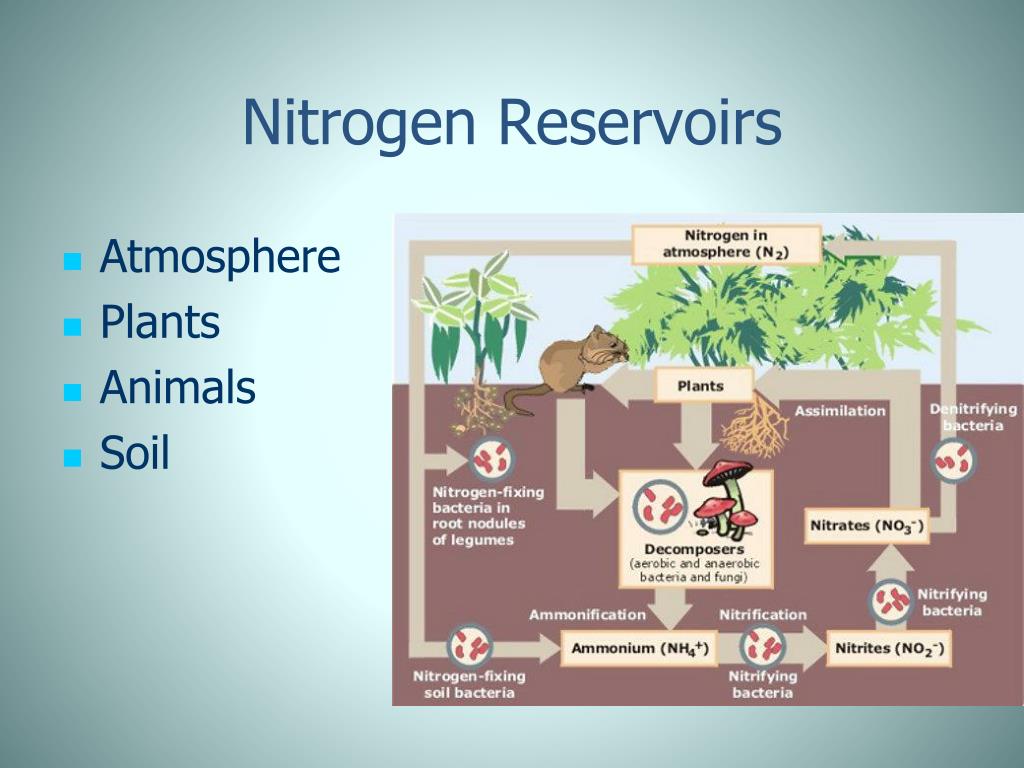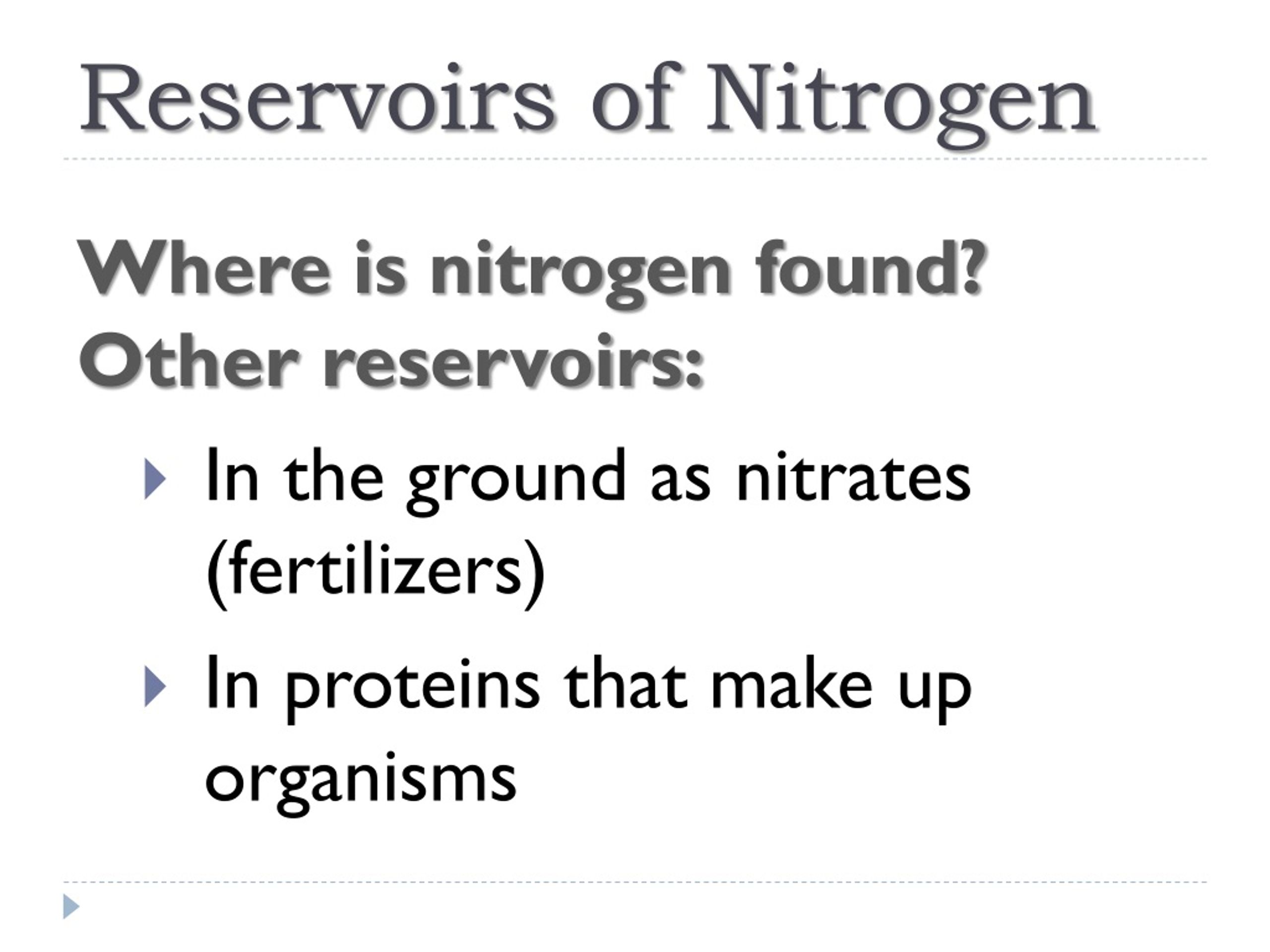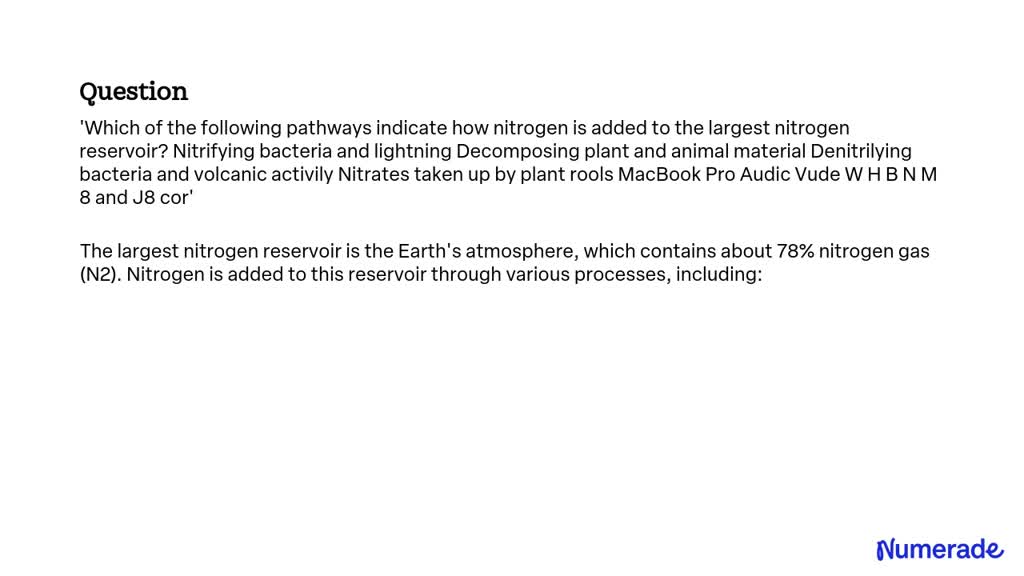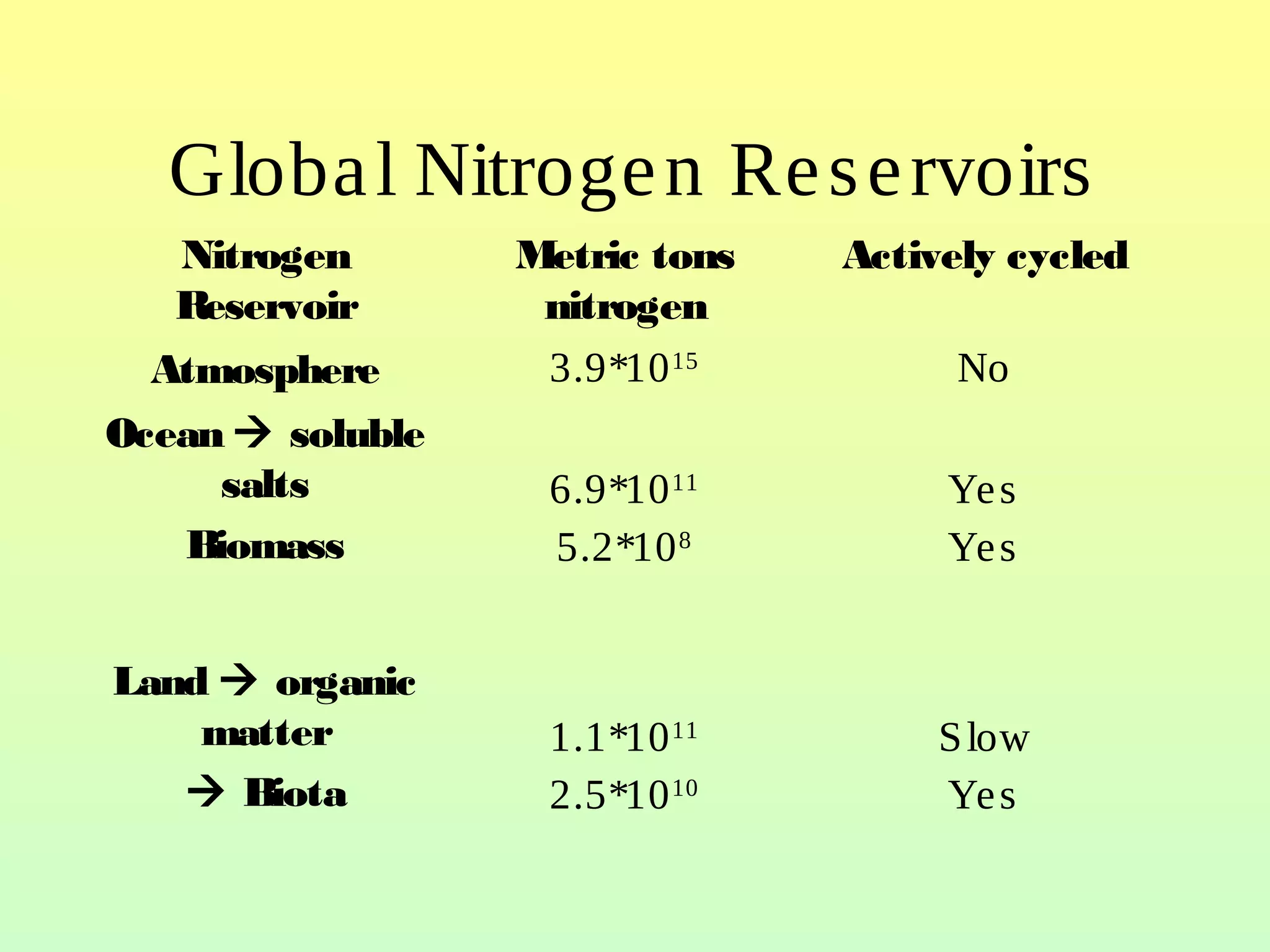How Is Nitrogen Added To The Largest Nitrogen Reservoir

The ocean, a vast and vital component of our planet, holds the largest reservoir of nitrogen. This crucial element underpins marine life and influences global climate patterns. However, the mechanisms by which nitrogen is added to this immense reservoir remain a complex and actively researched area of oceanography. Understanding these processes is paramount, especially as human activities increasingly alter the nitrogen cycle with potentially far-reaching ecological consequences.
This article delves into the principal pathways of nitrogen input into the ocean, examining the delicate balance between natural processes and anthropogenic influences. It will explore the roles of atmospheric deposition, nitrogen fixation, and riverine inputs, highlighting their significance in shaping the ocean's nitrogen budget. We will also consider the implications of increased nitrogen loading and its effect on marine ecosystems, as scientists strive to refine models and predict future changes.
Atmospheric Deposition: A Rain of Nitrogen
Atmospheric deposition is a significant pathway for nitrogen to enter the ocean. This occurs through two primary means: wet deposition (rain and snow) and dry deposition (gases and particles). Nitrogen oxides (NOx) from combustion sources like vehicles and power plants, along with ammonia (NH3) from agriculture, are released into the atmosphere.
These compounds can then be transported over long distances and deposited onto the ocean surface. Studies using satellite data and atmospheric models have revealed the widespread impact of atmospheric nitrogen deposition, particularly in coastal regions and downwind of major industrial areas.
Nitrogen Fixation: Microscopic Marvels at Work
Nitrogen fixation, the conversion of atmospheric nitrogen gas (N2) into bioavailable forms like ammonia (NH3), is a crucial process in the ocean. This is primarily carried out by specialized microorganisms called diazotrophs. These organisms, including certain species of cyanobacteria, possess the unique enzyme nitrogenase, enabling them to break the strong triple bond of N2.
Diazotrophs play a vital role, especially in nutrient-poor regions where other nitrogen sources are limited. Recent research has identified new and diverse diazotroph communities, expanding our understanding of their contribution to the marine nitrogen cycle. Their activity is influenced by factors like iron availability, temperature, and phosphate concentrations.
Riverine Inputs: A Continental Conveyor Belt
Rivers act as major conduits, transporting nitrogen from terrestrial sources to the ocean. Agricultural runoff, industrial wastewater, and sewage discharge all contribute to elevated nitrogen levels in rivers. This nitrogen, primarily in the form of nitrate (NO3-) and ammonium (NH4+), is then carried downstream and discharged into coastal waters.
The impact of riverine nitrogen inputs is particularly pronounced in estuaries and coastal ecosystems. Excessive nitrogen loading can lead to eutrophication, characterized by algal blooms, oxygen depletion, and fish kills. Understanding the sources and transport pathways of riverine nitrogen is crucial for managing coastal water quality.
Sedimentation and Benthic Processes: A Hidden Reservoir
While less directly an input *to* the main water column reservoir, sedimentary nitrogen processes are critically linked. Organic matter, including dead algae and marine organisms, sinks to the seafloor. Here, decomposition processes release nitrogen compounds back into the sediment, and subsequently, sometimes into the water column.
Denitrification, the conversion of nitrate to nitrogen gas, is a key process that *removes* bioavailable nitrogen from the ocean. However, coupled nitrification-denitrification can occur in sediments, where nitrification (conversion of ammonium to nitrate) fuels denitrification. The balance between nitrogen fixation, denitrification, and other benthic processes determines the overall nitrogen budget of the sediment.
Anthropogenic Impacts: Altering the Balance
Human activities have significantly altered the natural nitrogen cycle. Increased use of nitrogen fertilizers in agriculture has led to greater runoff into rivers and coastal waters. The burning of fossil fuels has increased atmospheric nitrogen deposition. These anthropogenic inputs can disrupt the delicate balance of the marine nitrogen cycle.
The consequences of excessive nitrogen loading include eutrophication, harmful algal blooms, and the expansion of hypoxic (low oxygen) zones. These impacts can have cascading effects on marine food webs and biodiversity. Addressing these challenges requires a multi-faceted approach, including improved agricultural practices, wastewater treatment, and emissions control.
Looking Ahead: Monitoring and Modeling the Future
Ongoing research efforts are focused on improving our understanding of the complex interactions within the marine nitrogen cycle. Scientists are developing sophisticated models to predict the impacts of climate change and anthropogenic activities on ocean nitrogen dynamics. These models incorporate data from field observations, laboratory experiments, and satellite remote sensing.
Continuous monitoring of nitrogen levels in the ocean is essential for tracking changes and assessing the effectiveness of mitigation strategies. International collaborations and data sharing are crucial for addressing this global challenge. By enhancing our knowledge and promoting sustainable practices, we can strive to protect the health and resilience of our oceans for future generations.
Further investigations into the roles of specific diazotroph species, the influence of micronutrients on nitrogen fixation, and the impact of ocean acidification on nitrogen cycling processes are crucial steps. Ultimately, effective management of nitrogen inputs requires a holistic approach that considers the interconnectedness of terrestrial, atmospheric, and oceanic systems. Balancing human needs with the health of our planet is the key.


.jpg)








%3B+soil+(as+NH4%2B+or+ammonium%2C+NH3+or+ammonia%2C+N02-+or+nitrite%2C+N03-+or+nitrate..jpg)
.jpg)
.jpg)


..jpg)

